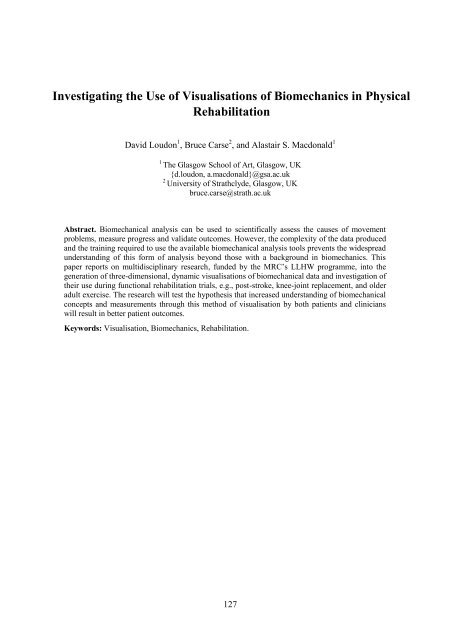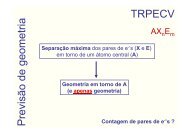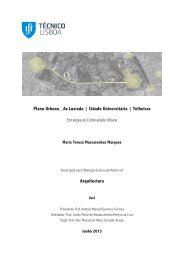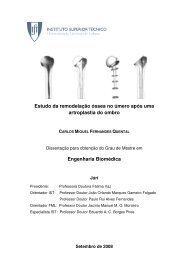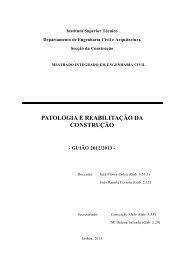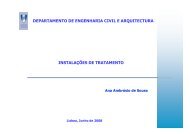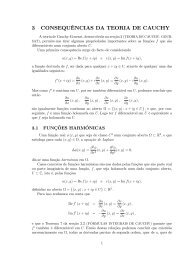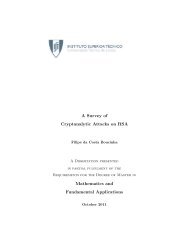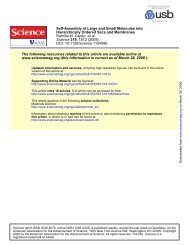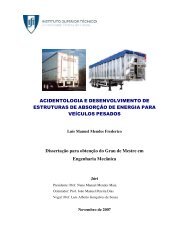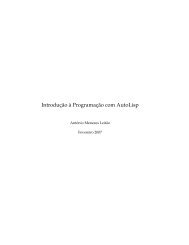Untitled - Universidade de Lisboa
Untitled - Universidade de Lisboa
Untitled - Universidade de Lisboa
Create successful ePaper yourself
Turn your PDF publications into a flip-book with our unique Google optimized e-Paper software.
Investigating the Use of Visualisations of Biomechanics in Physical<br />
Rehabilitation<br />
David Loudon 1 , Bruce Carse 2 , and Alastair S. Macdonald 1<br />
1<br />
The Glasgow School of Art, Glasgow, UK<br />
{d.loudon, a.macdonald}@gsa.ac.uk<br />
2<br />
University of Strathcly<strong>de</strong>, Glasgow, UK<br />
bruce.carse@strath.ac.uk<br />
Abstract. Biomechanical analysis can be used to scientifically assess the causes of movement<br />
problems, measure progress and validate outcomes. However, the complexity of the data produced<br />
and the training required to use the available biomechanical analysis tools prevents the wi<strong>de</strong>spread<br />
un<strong>de</strong>rstanding of this form of analysis beyond those with a background in biomechanics. This<br />
paper reports on multidisciplinary research, fun<strong>de</strong>d by the MRC’s LLHW programme, into the<br />
generation of three-dimensional, dynamic visualisations of biomechanical data and investigation of<br />
their use during functional rehabilitation trials, e.g., post-stroke, knee-joint replacement, and ol<strong>de</strong>r<br />
adult exercise. The research will test the hypothesis that increased un<strong>de</strong>rstanding of biomechanical<br />
concepts and measurements through this method of visualisation by both patients and clinicians<br />
will result in better patient outcomes.<br />
Keywords: Visualisation, Biomechanics, Rehabilitation.<br />
127


